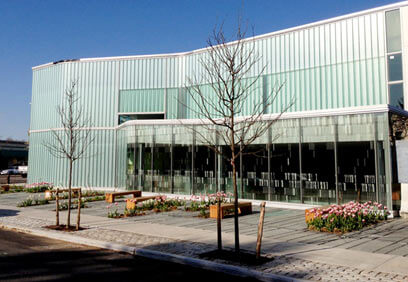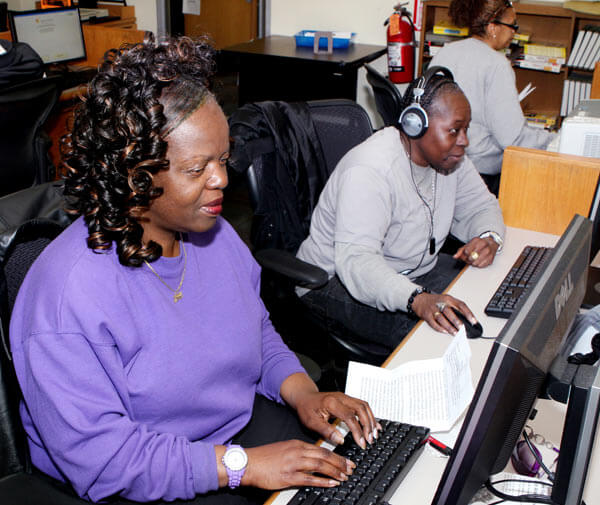By Alan Krawitz
Today’s Queens Library is much more than a place to merely find a book or do some research. More and more, the library has become a place where people can go to look for a job, brush up on computer skills and even find out how to become an American citizen.
And as one of the busiest library systems in the country serving more than 2.3 million people from 62 locations, including adult learning and family literacy centers, the library continues to evolve, improve and expand its services to meet the needs of the borough’s diverse and ever-growing population.
“We are in the midst of an extensive multi-year capital improvement program, funded by Mayor Bloomberg, Borough President Helen Marshall, members of the City Council and the State legislature,” said Thomas W. Galante, president and chief executive officer of Queens Library.
“It is allowing us to create library spaces that will serve the community far into the future — separate library spaces for adults, teens and children, more room for technology, reading lounges, outdoor areas where possible and above all flexibility in design.”
Galante also said the library is delivering its services in ways which are keeping pace with the continuing evolution of information technology.
Joanne King, a spokesperson for the library, said that most branches were built long before anyone ever imagined the internet.
She said that today, 36 percent of New Yorkers depend solely on public libraries for Internet and broadband access at a time when many people go online to apply for jobs, fill prescriptions, file for Social Security and perform numerous other vital daily tasks.
“We have to make room for more computer access points, laptop counters, Wi-Fi, self-check-in and self-check-out,” King said.
King promised that going forward there will be a major emphasis on putting even more technology into the hands of more people with the library’s help.
As part of those efforts, King said a new pilot program has recently gone live in Broad Channel to begin providing community-wide Wi-Fi access. She said the program would be expanded to more communities within the next few months.
In addition, last year the library began lending e-readers to facilitate the reading of electronic books.
“We will be lending more kinds of devices to customers going forward,” she promised.
Perhaps some of the library’s most noticeable changes have come in the form of a sharp increase in the numbers of classes and programs offered on a variety of topics from citizenship and immigration to adult literacy, job readiness training and veterans’ issues. Library statistics show that more than 700,000 people attended more than 37,500 free programs last year.
“Lifelong learning has been part of Queens Library’s mission since the beginning,” Galante said.
“No matter what educational level you have attained, you need to continually keep learning to keep up in your career and for your own fulfillment. Queens Library provides online learning opportunities, computer workshops, formal classroom instruction in ESOL, pre-GED and GED, job skills training, workshops to help start your own business — the list goes on and on.”
King added that the library system’s numerous programs address many pressing needs such as consumer health information, upgrading of job skills and supporting education for people of all ages.
Some of the library’s assistance even extends into the realm of landlord-tenant issues. King explained that in both the Long Island City and Peninsula branches, customers can even take advantage of a case manager who will follow-up on landlord problems as needed and offer more services if the need arises.
In earlier years, said King, a librarian might only go so far as giving a customer a list of phone numbers and city agencies or a free legal service.
“Today, the librarian can provide a palette of other resources,” she said.
Moreover, the library, which gets the majority of its funding from the city, has been steadily building new branches and improving old ones in an effort to continue to meet the needs of Queens’ residents.
“Queens Library is in the midst of the biggest capital program in its history,” said King, adding that currently there are four brand new libraries being built in addition to eight major expansions and renovations.
She noted that 33 branches are undergoing smaller updates such as the replacement of roofs and the upgrading of heating and ventilation systems.
A primary reason for the new branches being built and renovations of older ones — Ridgewood underwent a $2.8 million renovation in 2009, the new $17 million Glen Oaks library is finished and the $27 million Elmhurst library will open next year — is to handle increasing demands on their capacity, according to King.
“All of our libraries are very, very heavily used and they need more space where it is possible.”
King also said much of that needed space is due to customer preferences in how they use the various parts of the library.
“Over the years, we have found that adults, teens and children prefer to have separate library spaces whenever possible,” King said. “Teens and children make more noise than the adults like, the teens don’t like the younger children around, etc.”
King said everyone needs a piece of the library they can call their own and that adults increasingly need a place to just come and “be.”
“Whether they want quiet space to read, study or email, read the newspaper, engage in online learning, or just relax … the library is a welcoming, free and open place to do it all.”
































